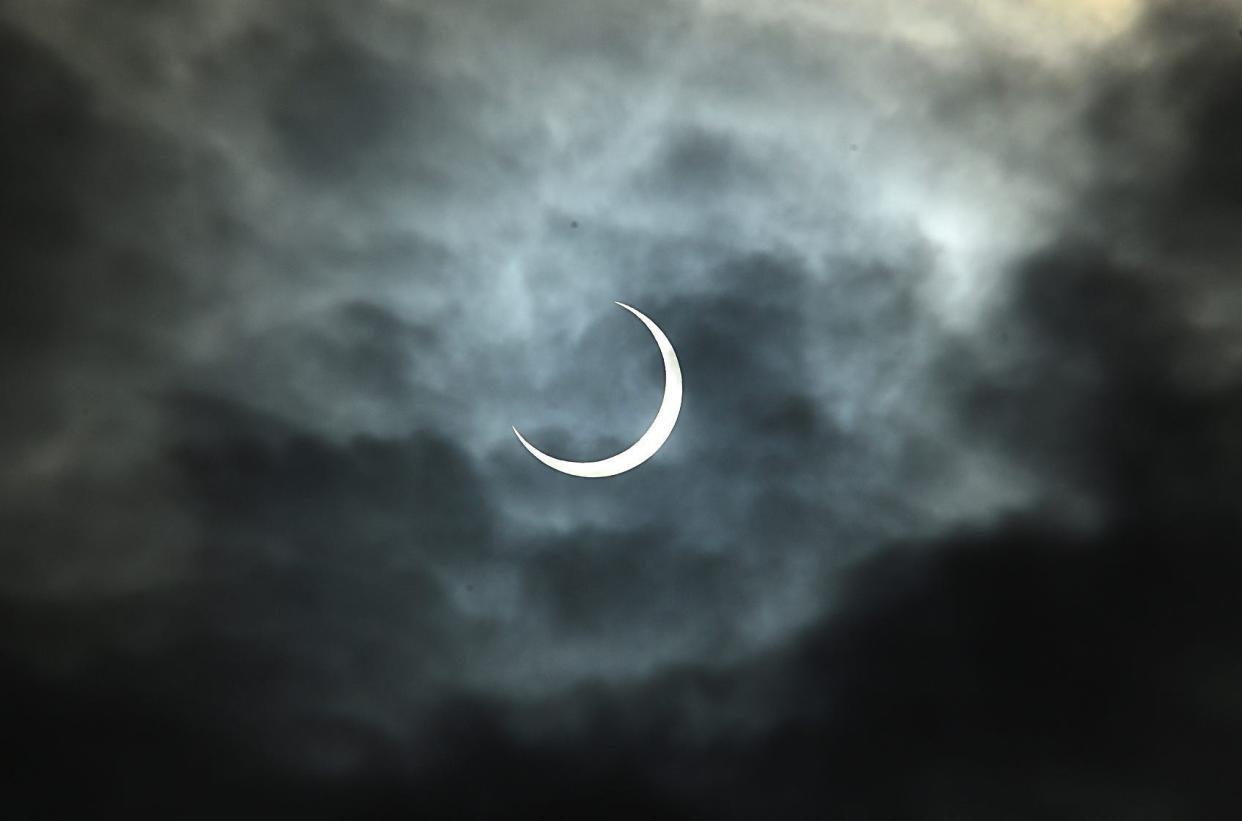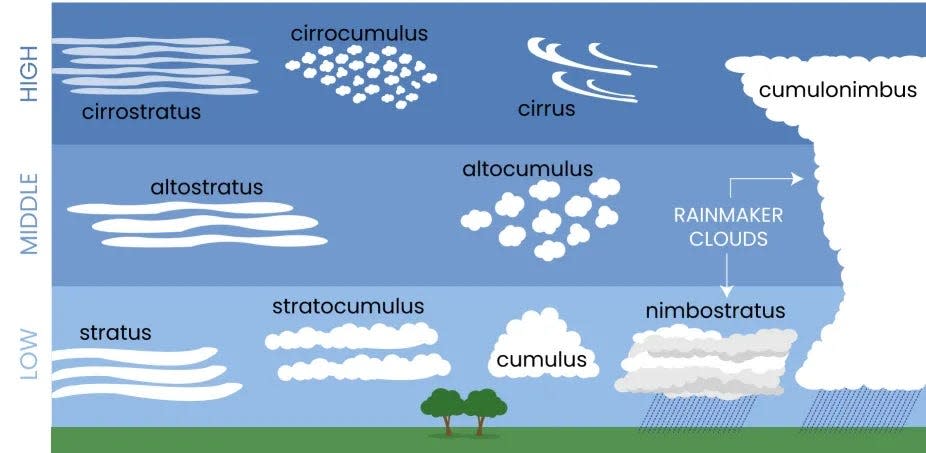Eclipse lovers: Why you should watch the cloud forecast for the April 8, 2024 eclipse
Editor's note: An updated cloud forecast for the April 2024 total solar eclipse is in. Read the latest eclipse forecast and news as of Monday, April 8.
Clouds are just part of weather, and it's likely that some of the millions of people in the path of totality for April's total eclipse will have to endure overcast skies that will impact the experience.
But determining how clouds would change your view depends on the types of clouds – and which expert you ask. Some advise eclipse watchers to not worry about the skies, others say an overcast sky can ruin the experience.
The shadow of the moon will plunge everything in its path into darkness, regardless of whether there's clouds in the sky, and writer and eclipse chaser Jamie Carter on WhenistheNextEclipse.com advises anyone who has never seen an eclipse to not be intimidated by clouds.
However, Dave Clark of NationalEclipse.com says clouds can be a showstopper as they block your view of the moon crossing in front of the sun – that's "the main event."
As you're planning your eclipse experience, keep in a number of eclipse safety warnings as well.

High clouds are better for eclipse viewing
Before last year's annular solar eclipse, National Weather Service meteorologist Tim Daldrup told Oregon Public Radio that if clouds are in the forecast, you should hope for the "right kind of clouds."
“If we wanna see it, we’ll want the higher-level clouds,” Daldrup told OPR. “Those tend to be the more feathery cirrus clouds that can still be seen through. They might obstruct the eclipse but you can still see it.”

Cirrus clouds would be in contrast to some of the more eclipse-unfriendly clouds, such as a thick deck of lower-level stratus or cumulus clouds that would likely completely block the sun.
Savvy eclipse chasers will keep tabs on local forecast discussions from the National Weather Service, which often mention predicted and current cloud types.
How different cloud types will affect the eclipse view
Eclipse chaser David Makepeace told USA TODAY that during a cloudy eclipse, the clouds will darken: "For those few moments, it will feel dark and stormy."
"But it's still a phenomenon," he said.
Here's a few scenarios that could unfold:
Thick, low cloud cover (stratus): A thick layer of these dull, featureless clouds could be the ultimate eclipse downer. The sky will darken for a bit during totality and then brighten after a brief time.
Wispy, high clouds (cirrus): Decent eclipse viewing, with totality still visible. "Their semi-opaque nature should allow the eclipse to be seen, though more-or-less hazily," noted meteorologist Jay Anderson on Eclipseophile.com.
Scattered puffy clouds (cumulus): It's very difficult to predict whether you'll see the eclipse if the sky is filled with these clouds. Their capricious nature will make for a nerve-wracking eclipse day.
My partly cloudy eclipse experience
I was lucky enough to be in downtown Charleston, S.C., for the August 2017 total solar eclipse, where clouds played peek-a-boo with the sun before and during the eclipse.
Is the April 2024 eclipse safe for pets? Why experts want you to leave them at home.
Despite a thunderstorm rumbling nearby, the clouds diffused at just the right moment to avoid completely ruining the view of the total solar eclipse on that hot summer day.
As totality took place, the clouds thinned enough to see the full total eclipse, although the sun's corona — the sun's thin, outer atmosphere only visible during a total eclipse — was difficult to see.
More: Clouds part just in time for total solar eclipse in Charleston, S.C.
Solar eclipse totality map
Using the map above, find your location to see when the eclipse begins and ends and how much of the sun will be covered at its peak. Dark red dots along the path of totality represent areas that will experience a total solar eclipse, and all other orange areas will see the moon partially cover the sun. Don't see a map? Click here.
This article originally appeared on USA TODAY: 2024 total solar eclipse could be cloudy: What that means for you
